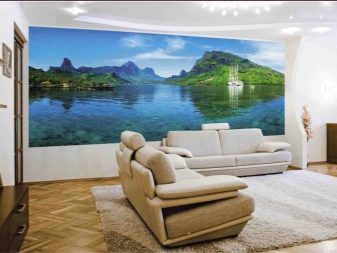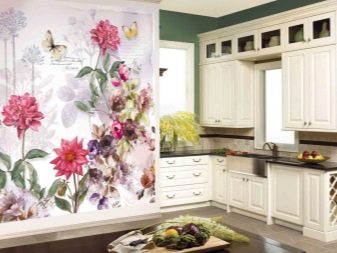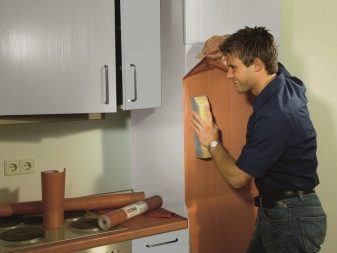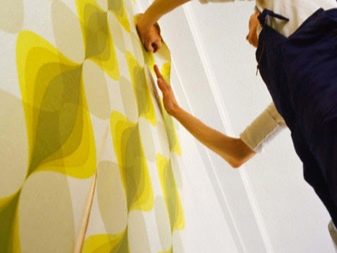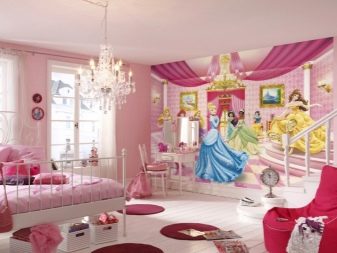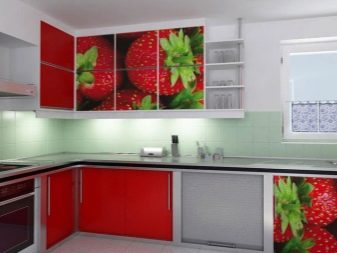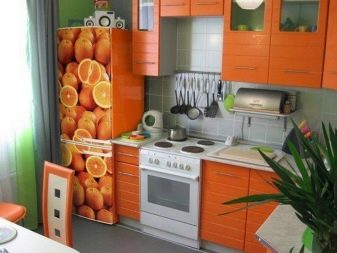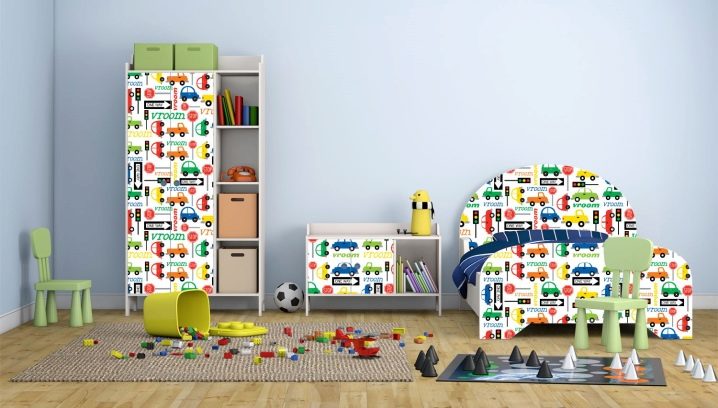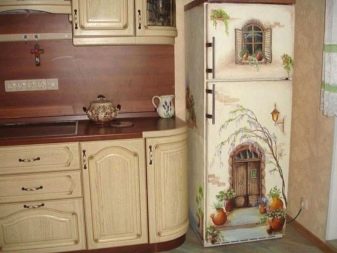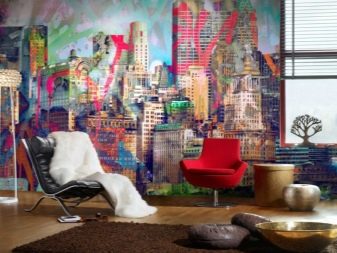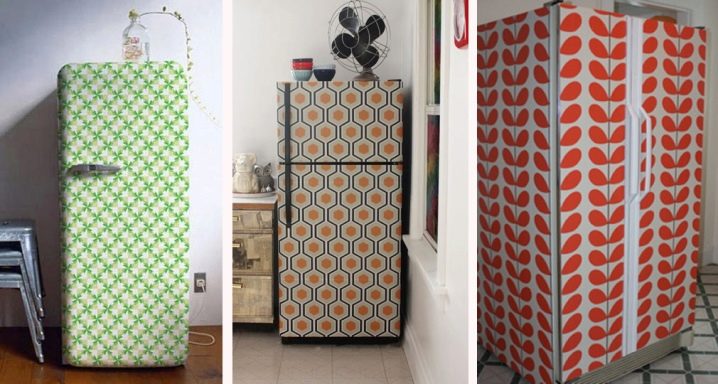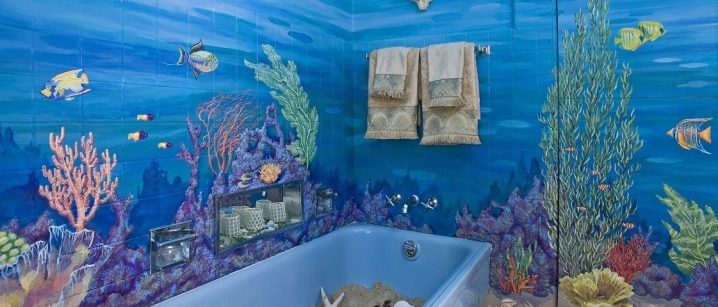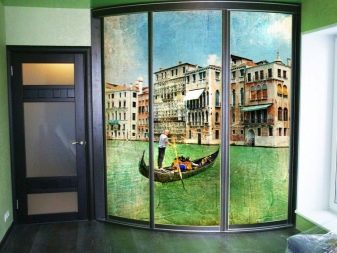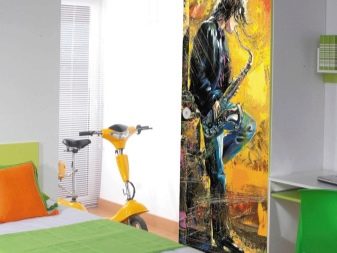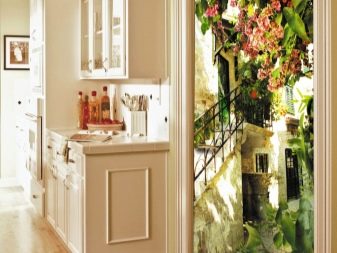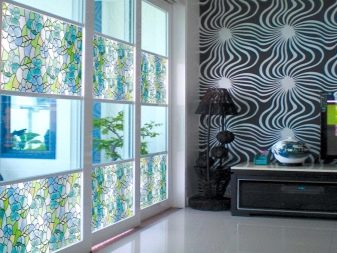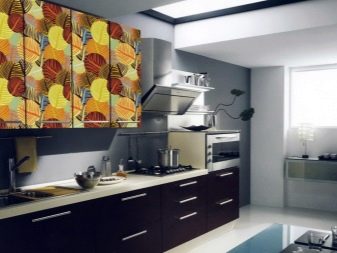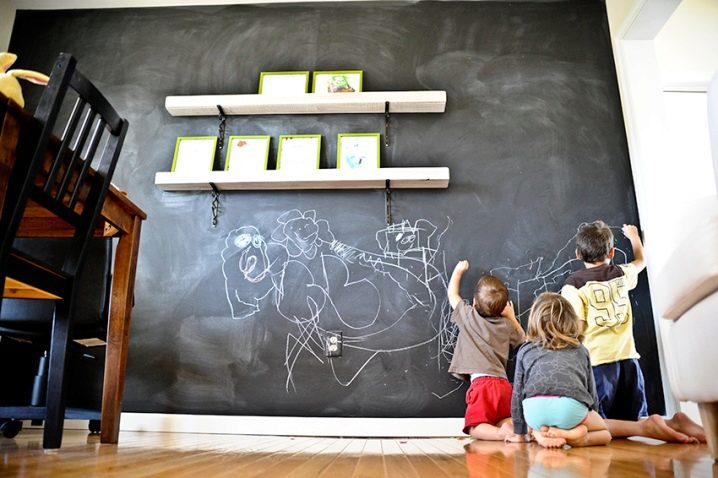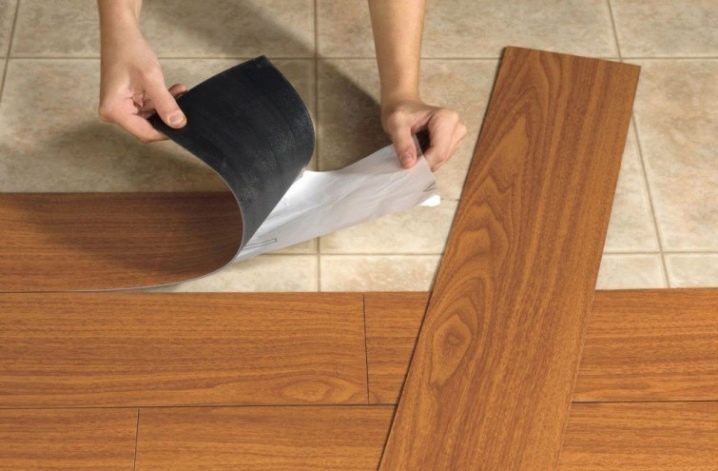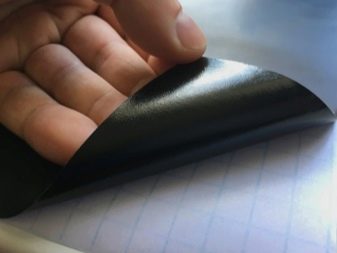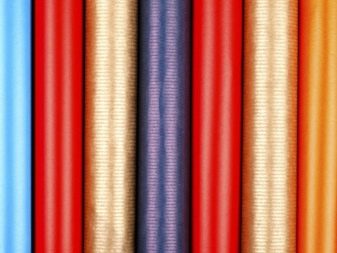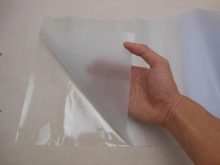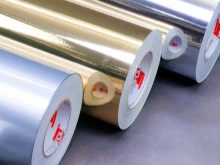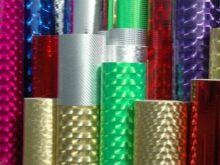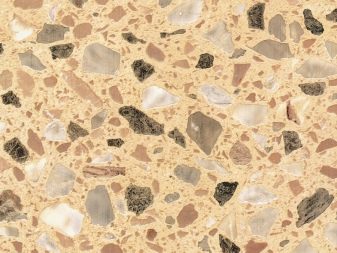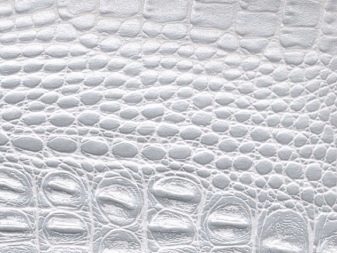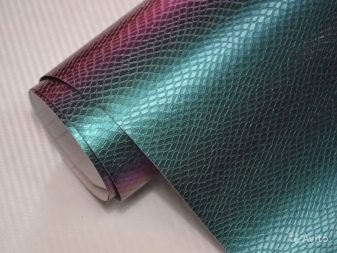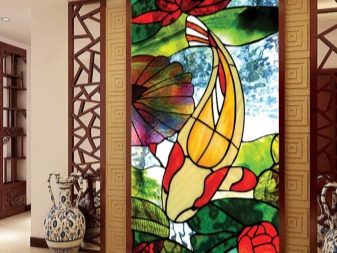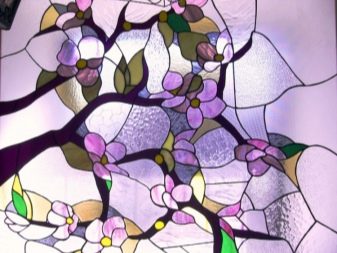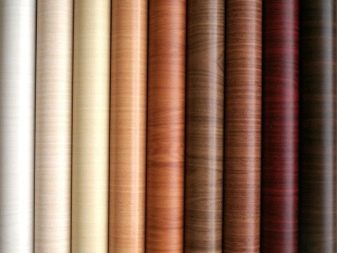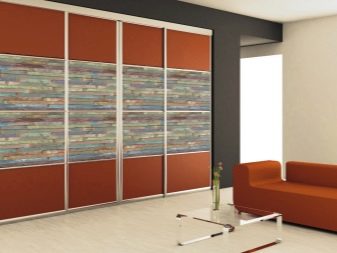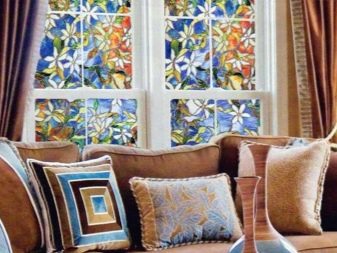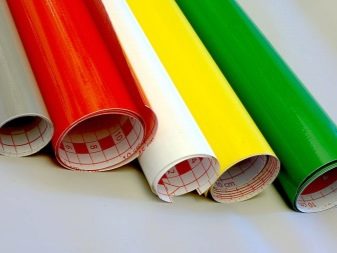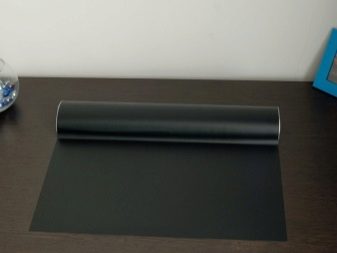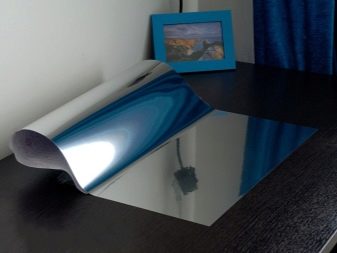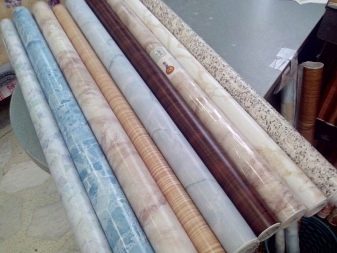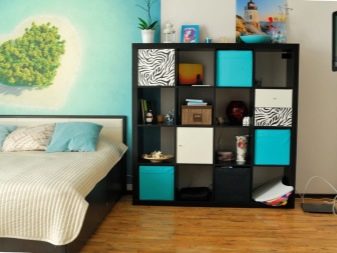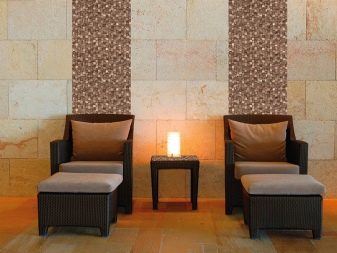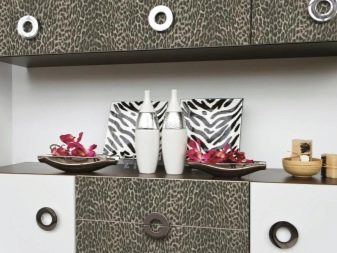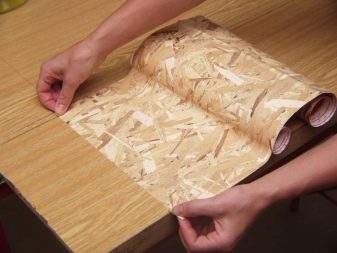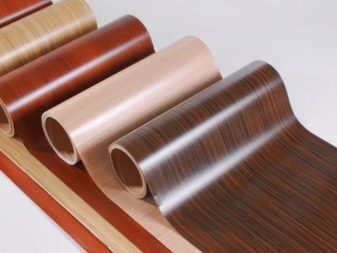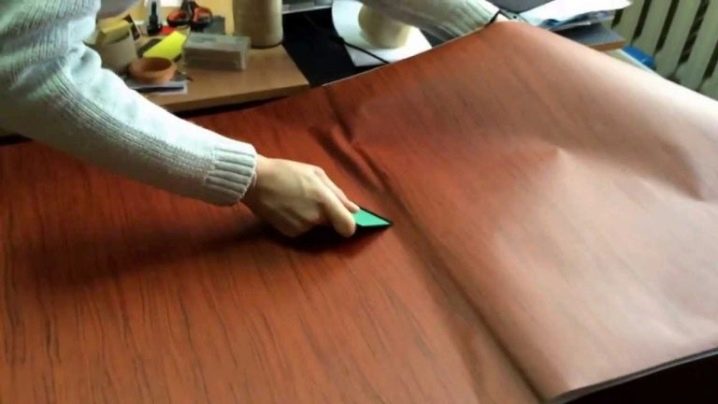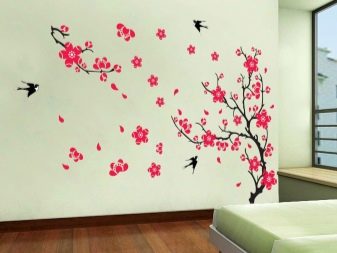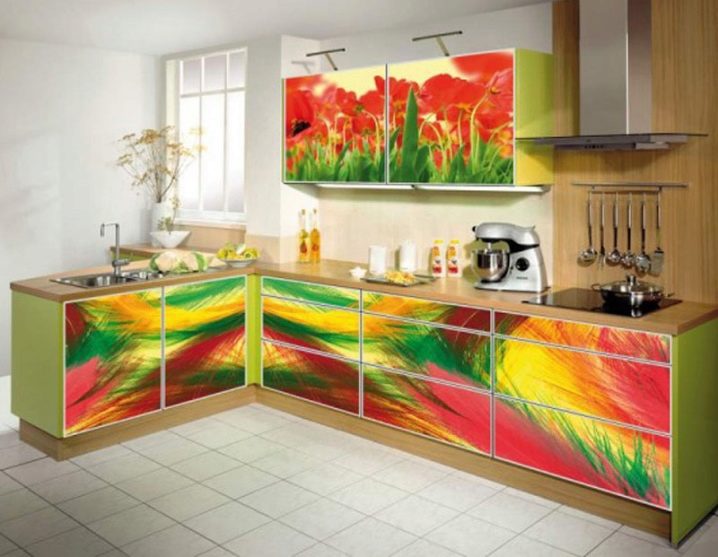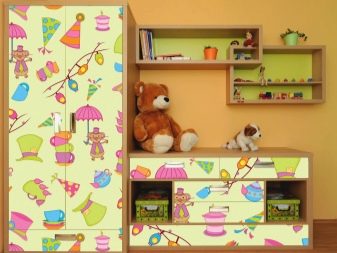Self-adhesive wallpaper
The variety of finishing materials gives a lot of opportunities for creative design. When finishing the premises, much attention is paid to the wallpaper: they set the tone for the interior, often “hold out” the situation to the desired level, make the walls elegant, in keeping with the spirit of the era. Among the huge list of varieties of interior decoration, self-adhesive wallpapers are particularly interesting material sought after by buyers. They stand out against the background of other analogues, have a number of features and advantages.
What is it?
Self-adhesive wallpapers are called self-adhesive. This is a composite material of several layers:
- the basics;
- glue;
- antiadhesion;
- protection.
This is an alternative to the usual roll and liquid counterparts, plastic and high-quality finishing material, "finish-coating", which can be glued to different surfaces, just by removing the protective paper layer.It is characterized by durability, has a number of advantages, is formed by the method of calendering, alluvial extrusion and caching.
Functionality
- Self-adhesive film is not just a decorative design technique: it is a functional subject of lining. Depending on the selected pattern, texture, color and style, these wallpapers can:
- update the surface of the furniture, eliminating the need to purchase a new one (it is especially important if there are small children or pets in the house);
- collect together separate pieces of furniture (kitchen, children's furniture, wardrobe, table and chairs, work area);
- to mask the defects of surfaces using the method of combining materials or design sketches (panels, paintings, patchwork technique);
- protect the working surface of the walls in places most prone to pollution and moisture (for example, in the hallway).
Advantages and disadvantages
This raw material is an indispensable tool in carrying out finishing work. In contrast to the classic and liquid wallpaper, the use of this material has no boundaries.
Regardless of film or paper base, self-bonding is appropriate for finishing:
- walls;
- ceiling;
- doors;
- kitchen sets;
- chairs;
- tables;
- cabinets;
- mirrors;
- windows;
- bedside accessories.
Being a unique repair tool, this coating:
- several times simplifies the decoration of the treated surface;
- resistant to moisture and alkaline solutions, retains the attractiveness and brightness of the surface for a long time;
- it is made on new technologies, differing in high technical and practical characteristics;
- characterized by ease of use, while quite strong and elastic;
- It is cheaper than the usual counterparts, it allows you to save money on facing the desired surface;
- is a bright and spectacular finishing material, differs in a rich color palette and a variety of prints;
- depending on the theme chosen successfully, it fits perfectly into the different styles of the interior;
- due to the used color and size of the print, it is able to visually change the space of the room, filling it with light or highlighting bright spots by means of saturated tones;
- can be used in any room of the dwelling, regardless of the level of humidity (suitable for decorating the bedroom, living room, nursery, study, home library, loggia, bathroom, toilet room);
- it is distinguished by a variety of textures, supporting the style of the interior composition and often imitating the necessary finishing material;
- looks expensive and natural, forcing the furnishings to match the desired status;
- sold in any hardware store next to the usual analogues;
- due to the different structures, widths and prices of the components, they are different in cost, so that buyers always have the opportunity to purchase finishes in the right amount, taking into account the taste and the wallet.
Self-adhesive wallpapers are odorless, they are harmless and can be used with other finishing materials. Self-adhesive looks harmoniously with vinyl, non-woven and liquid wallpaper, it can be combined with plastic and laminated panels. No less colorful, it looks in the kitchen in combination with tile.
This is a material that perfectly replaces the painting of walls and furniture, it does not need to be dried after pasting the working surface, it has good adhesion, is not whimsical in care, and can be sold in two varieties: in a roll or a length of the desired length.
Minuses
Like other facing materials, self-bonding has disadvantages:
- it can not be glued to the unprepared surface, otherwise it produces irregularities, bumps, it is torn from sharp burrs;
- not compatible with several types of surface (not glued to lime, planes with greasy and dirty stains);
- in the presence of defects pasting exfoliates from the pasted surface (does not accept bubbles and water);
- needs accuracy and knowledge of certain nuances of pasting (with excessive tension, it is able to tear, stretch, breaking the perfection of the drawing and the joint);
- not able to mask significant surface flaws, does not fit into the fossa and does not cover every bend of the tubercles (peel off);
- does not provide for re-sticking: if correction is needed, you will have to use a new canvas (requires a margin for scrap and rework).
The disadvantage of self-adhesive wallpapers are the different possibilities of design of budget and premium varieties of material. Canvases based on paper are inferior to film finish in everything: their color, brightness, pattern, texture is much simpler. Moreover, resistance is inherent, rather, film varieties. In addition, self-adhesive can not glue the concrete walls.
Kinds
Self-adhesive wallpaper - a line of varied coatings.
This finish includes several varieties that have strengths and weaknesses:
- PVC (polyvinyl chloride) film is a classic, reminiscent of ordinary wallpaper;
- photo printing on a glue base - composite paintings;
- sateen varieties - canvas with embossed and woven surface effect;
- chalky - variants with a special coating for drawing with chalk or markers;
- mirror - coatings with a metallized base;
- cork wallpaper - varieties with sound and heat insulation;
- Coating-imitation - self-bonding for natural and synthetic materials.
The glue base of these wallpapers is made on rubber or water based dispersion acrylate.
Surface types
Self-bonding is a unique material. In addition to a rich assortment of shades and patterns, it is distinguished by a degree of transparency. This technique allows you to use the wallpaper as a stained glass, glued on a glass surface. It ideally keeps on a laminate, MDF, LDSP, DVP, the wood, plastic and metal plane.
Depending on this, the texture of the material allows you to beat the features of a particular room:
- glossy - to divert attention from the dark areas of the room;
- matte - to give the status of the situation;
- mirror - to create the illusion of space in the room;
- holographic - to give the room an extraordinary effect;
- transparent - to support the desired design style;
- rough - hide minor irregularities of the glued surface.
The texture can be velvety, plush, self-adhesive suitable for classic and ultra-modern interiors.
Among the interesting colors-imitations of textures include patterns for:
- veneer or rough wood;
- natural stone;
- ceramic granite;
- ceramic tiles;
- leather upholstery;
- reptile skin;
- laminate;
- blackboard;
- brickwork;
- stained glass window;
- Chinese painting.
Often in the collections there are all kinds of flowers, butterflies, monograms, lace motifs with interlacing of stems and leaves, children's colors with images of princesses and soft toys. Hit patterns are hieroglyphs and large photo printing, created by order. Figures are selected in such a way that they look appropriate, in accordance with the purpose of the room and the chosen design style. The unsuccessful prints include a small mat, a cage, a strip and polka dots: instead of a beautiful effect, they create a ripple in the eyes, which quickly begins to annoy all households, since it is painful to look at such a finish.
Roll size
The dimensions of the roll wallpaper differ in width, which can be of several formats: 45, 67, 70, 90, 100 cm. Each company offers its own formats, so there are no hard standards. The length can be 8, 15, 20 meters. Some varieties reach up to 50 m with a width of 60 cm. At the same time, the cost does not depend on the width, but on the texture, density, composition, roll area and operational characteristics. The cheapest wallpaper are options for updating furniture: their width is 45 cm, length - no more than 2 m.
Materials
The structure of the material consists of:
- polyester, propylene or polyvinyl chloride (coating layer);
- plasticizers and stabilizers (for elasticity and strength);
- pigments (responsible for the color solution);
- cellulose or synthetic textiles (base wallpaper).
In other words, it is paper or film wallpaper with the addition of artificial or natural fibers.
Colors
The color solutions of self-adhesive wallpapers are multifaceted and subject to a certain theme and texture. If it is a species of wood, they are sustained in beige and brown tones, a light shade of wenge oak. Less commonly found on the canvases are gray-black with splashes of brown color of the floor covering under faded wood. Cloths with imitation of stone are made in gray, malachite shades.
With regards to stained glass sketches, a bright combination of red, blue, green, yellow and violet colors can be noted.
Cloths for the kitchen, living room and child are cheerful: here they play sunny and warm colors: red, orange, yellow, green, pink shades. Often they are added notes of freshness (mint, turquoise, blue paint). Wallpaper for the bedroom is more restrained: golden, cream, sandy shades are preferable, although bright black and brown contrasts are often seen on a light background.
Brands
To get acquainted with the material, you should pay attention to the products of proven companies that have earned the trust of customers.
Patifix is a natural wallpaper in marble, wood, velor, animal skin, plain and metallized fabrics, as well as a decoration with a variety of patterns and a stylized ornament 15 m long with a width of 45 and 70 cm, featuring a rich assortment and an acceptable price.
Alkor - decorative coatings 15 m long with a width of 45, 67, 90 cm with a single-color, stained-glass, holographic, metallic coating, imitation of wood, stone, matting, colors for children and adults, including abstraction and school board.
D-C-Fix - rolled stained glass film without adhesive layer with the effect of electrostatic attraction and on a familiar basis with a variety of patterns in white, bright and bright colors, as well as adhesive wallpaper with a velvet, smooth texture in monochromatic colors and color patterns, including photo printing.
How to choose?
To purchase self-adhesive wallpaper was successful, the choice of material should be approached thoroughly. For a start, it is important to understand that the material for facing walls, furniture, glass is different. In addition, it differs in the degree of moisture resistance, so some surfaces are almost not afraid of contact with a damp cloth, while others allow only dry dusting. If you plan a quality veneer, it is important to think about the composition and location of the finish. When the approximate requirements are scheduled, you can go to the store. Purchase is carried out personally. So there is an opportunity to evaluate the clarity and realism of the pattern, the saturation of colors, the size of the print.
It is worth taking note of several recommendations:
- it makes no sense to glue the laminate under a similar surface: it makes no sense, even if the film corrects scratches or cracks in the base;
- the picture is calculated taking into account the chosen accent: it must correspond to the size of the space allocated and be located in the center, otherwise the room will “go” to the side;
- the type of surface to be glued matters (preferably wallpaper for pasting plastic, veneered plane);
- The relevance of prints in a particular style and type of room is important: it should not disrupt the overall harmony of the design, matching at least one shade with the background of the walls and their texture (matte wallpaper will not stare with a glossy surface);
- it is worthwhile to take care of a small stock of material: if in the process of work there is a defect, there may not be enough material for plywood;
- moderation of use matters: there should not be a lot of self-bonding, otherwise the interior will lose its attractiveness, it will become tasteless.
To make the composition not boring, you can buy paired wallpapers: this will allow you to create the appearance of an ensemble, to place accents in the right places, to enter the decoration in the existing interior.
Beautiful interiors
It is not enough to buy self-adhesive: you need to be able to use it. To understand what a harmonious design update looks like, you can evaluate the techniques of experienced designers.
If there is no apron in the kitchen, self-adhesive wallpapers will perfectly fill the space between the tables and the hinged shelves: bright vertical stripes in the tone of furniture handles will bring warmth to the cold colors of the kitchen.
Nothing will pull out the color boredom of beige wallpaper like a juicy green tone: self-adhesive with photo printing in the form of large olives will make the interior look different, especially if you decorate the facade of one of the tables in an identical shade.
To make the interior of the nursery special, it is enough to paste over the facades of the furniture: the wardrobe and the table will look very different, and the room will play with positive colors.
Using large drawings, you can use the following contrast technique: cut out a decorative element and stick it on another material. The result is an illusion of furniture ensemble.
On how to properly glue self-adhesive wallpaper, see the following video.

